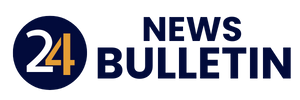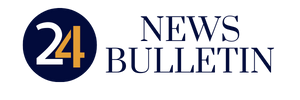In retaliation for the adoption in Vienna of a critical resolution condemning Tehran’s nuclear activities, noted for its lack of cooperation, Iran announced this Friday, November 22, the commissioning of “new advanced centrifuges.”
The text, prepared by London, Paris and Berlin associated with Washington, was approved on Thursday by 19 of the 35 member states of the board of governors of the International Atomic Energy Agency (IAEA), according to diplomatic sources interviewed by AFP. Russia, China and Burkina Faso voted against, while 12 countries abstained. Venezuela could not participate.
After the vote, the Iranian representative criticized the AFP for a “politically motivated” gesture. Consequently, “the head of the Atomic Energy Organization of Iran (AEOI) ordered effective measures to be taken, including the commissioning of a series of new advanced centrifuges of different types,” the IAEA said in a joint press release on Friday. and the Iranian Agency. Ministry of Foreign Affairs.
Centrifuges are machines that enrich transformed uranium into gas, spinning it at very high speed, allowing the proportion of isotopic fissionable material (U-235) to be increased for different uses. “At the same time, technical and safeguards cooperation will continue with the IAEA, as in the past”, in accordance with the commitments assumed by Iran, the Iranian authorities specify.
“Deeply disturbing” nuclear activities
Iran’s retaliatory measures “could be withdrawn” if the IAEA backs down “or if negotiations are opened,” political scientist Hadi Mohammadi told AFP from Tehran.
The text validated on Thursday in Vienna, whose meaning is symbolic at this point, reminds Iran of its “legal obligations” under the Non-Proliferation Treaty (NPT) ratified in 1970. Western diplomats in Vienna drafted a harsh accusation against Iran and denounced the escalation of the Islamic Republic, with US ambassador Laura Holgate reporting “deeply disturbing” nuclear activities.
Tehran defends the right to nuclear energy for civil purposes, particularly energy, but denies wanting to acquire an atomic bomb, something that Western countries suspect. The NPT requires signatory states to declare and place their nuclear materials under the control of the IAEA.
In 2015, Iran concluded an agreement in Vienna with France, Germany, the United Kingdom, China, Russia and the United States to regulate its nuclear program. In exchange, the text provided for a reduction in international sanctions against Tehran. But in 2018, Donald Trump, then president of the United States, unilaterally withdrew his country from the agreement and reinstated strong sanctions against Iran.
The Iranian president wants to eliminate “doubts and ambiguities”
In retaliation, Tehran significantly increased its stockpile of enriched materials and raised the threshold to 60%, close to the 90% needed to make an atomic weapon, according to the IAEA definition. The nuclear deal, now an empty shell that negotiations failed to revive in 2022, capped this rate at 3.67%.
Iran has also severely restricted its cooperation with the UN nuclear watchdog since 2021, disconnecting surveillance cameras and withdrawing the accreditation of experienced inspectors.
Iranian President Massoud Pezeshkian, in power since July and a supporter of dialogue with Western countries, said he wanted to eliminate “doubts and ambiguities” about his country’s nuclear program.
Iran thus believes it has demonstrated “good will” by inviting the head of the IAEA, Rafael Grossi, to visit Iran’s Natanz and Fordo nuclear facilities last week. This trip was seen as one of the last diplomatic opportunities before the return to the White House in January of Donald Trump, architect of a policy of “maximum pressure” against Iran during his first term (2017-2021).
Source: BFM TV


